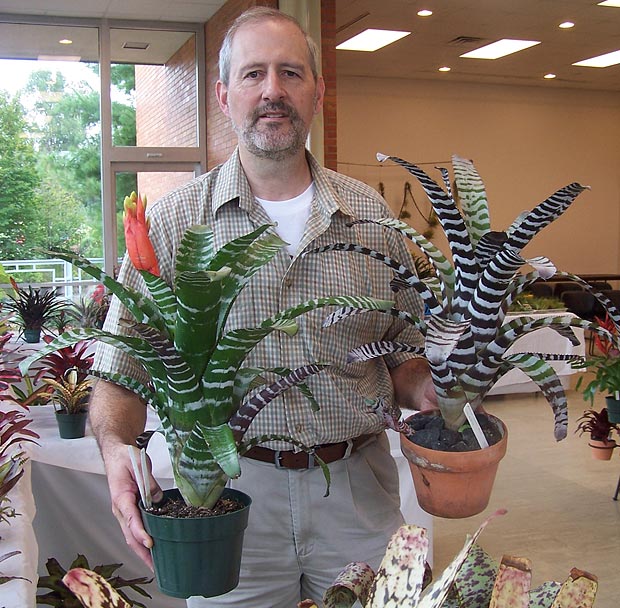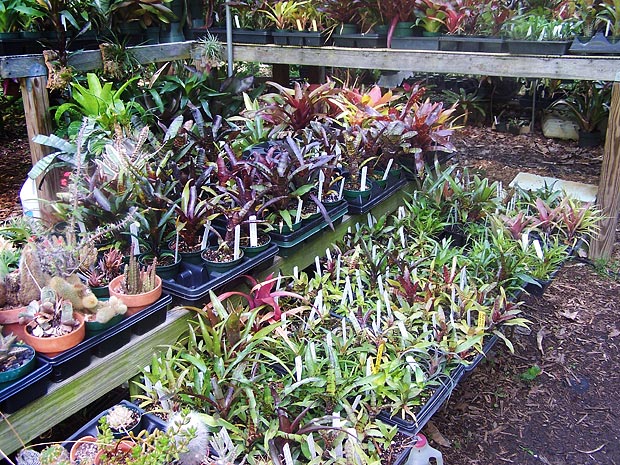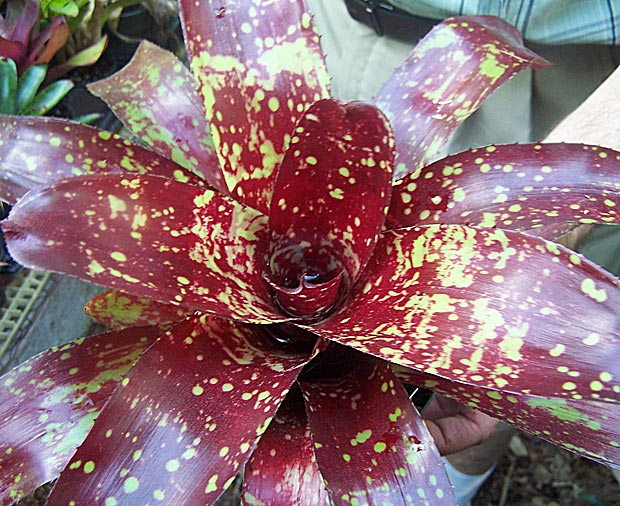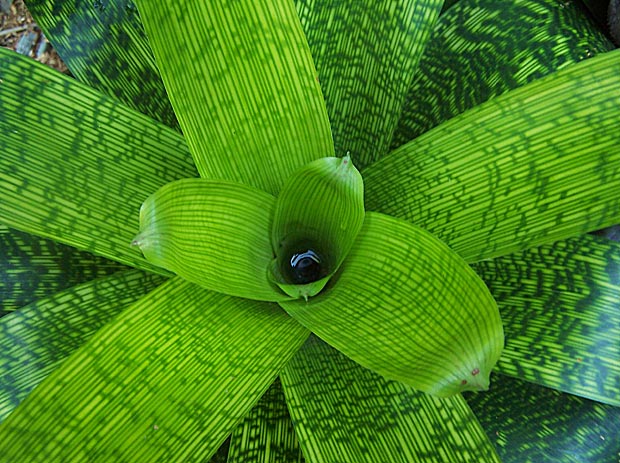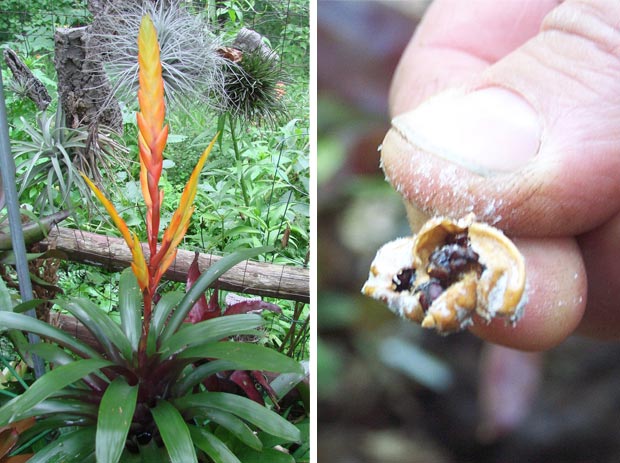Introduction to bromeliad care: Tips from Paul Wingert
Text and photos by Sandie Parrott
Water. They must never dry out; too dry is worse than too wet. For types with overlapping leaf bases, keep the vase area full of water. Overflow a bit for the roots. Large plants can hold several gallons of water. For terrestrial types without a vase area: keep them evenly moist; they can tolerate some dryness.
Air. Air plants (Tillandsia) are named after a botanist that was afraid of water. Mist every couple of days or dunk and soak one hour, every other week. Air plants need good air circulation—use a fan indoors in the winter and hang them outside during the summer. If elevated, you don’t have to deal with sow bugs or other ground pests.
Light. In summer, bromeliads will do well where hosta plants grow well. Wingert also uses 40 percent shade cloth on his shade house. For winter, they need all the light they can get: a south, west, or east window, or better yet, a greenhouse.
Soil. For vase plants, Wingert makes his own mix of 1/3 perlite and lava rock, 1/3 cypress mulch and aged pine bark (fine), and 1/3 peat moss. For terrestrials like Cryptanthus, Dyckia, and Orthophytum, he uses a professional soilless mix.
Pots. Wingert uses plastic. They are lightweight and fit the pot rings in his shade house. Most bromeliads like to be pot-bound.
Fertilizer. This is a constant source of debate. Some experts do not fertilize. It is believed by some that if you want more flowers and don’t care about the foliage, it is alright to fertilize. If you decide to fertilize, use water soluble fertilizer added to water. Place some in the innermost cup of the plant and a little on the soil. Bromeliads cannot handle urea or copper; make sure fertilizer does not contain either one. Air plants (Tillandsia) need high nitrogen. Guzmanias, billbergias and vriesias prefer an orchid-type fertilizer; they will bloom much better. Neoregelias need a low nitrogen fertilizer, like a cactus fertilizer.
Pests. Not a lot of pest problems exist for bromeliads. Scale will create spotting but won’t kill the plant. Use insecticidal soap and scrub lightly. Rub them off if dead. Reapply the soap in two weeks if the infestation is bad. Mealy bug may appear on flower spikes, but it shouldn’t be a concern. Watch for chipmunks planting or spreading seeds in pots.
Foliage maintenance. It is natural for the lower leaves to brown and dry; just remove them. You can carefully trim brown tips with scissors.
Propagation. Plants form pups or offshoots after they bloom. Remove them when they are 1/3 to 1/2 the size of the mother plant. Sever as close to the mother plant as possible and plant separately.
Seeds and plants. Seeds can be collected from plants or purchased. Most serious growers use their own seed or obtain seeds at seed exchanges from other growers. The Bromeliad Society International has a list of companies selling plants and seeds; visit www.bsi.org.
To learn more or attend a Southeast Michigan Bromeliad Society event, visit their website: www.bromeliad.society.gardenwebs.net/.
